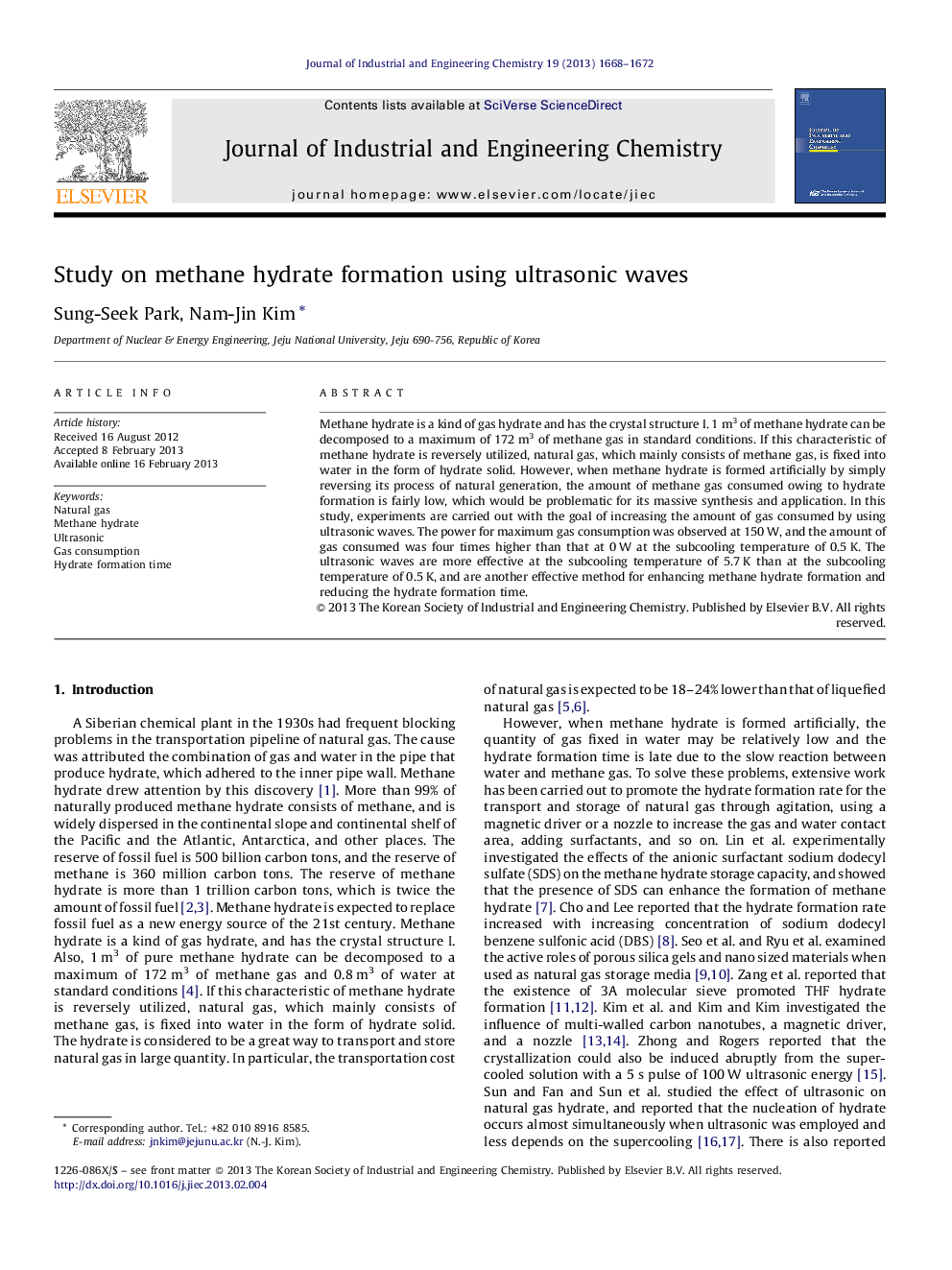| Article ID | Journal | Published Year | Pages | File Type |
|---|---|---|---|---|
| 227902 | Journal of Industrial and Engineering Chemistry | 2013 | 5 Pages |
Methane hydrate is a kind of gas hydrate and has the crystal structure I. 1 m3 of methane hydrate can be decomposed to a maximum of 172 m3 of methane gas in standard conditions. If this characteristic of methane hydrate is reversely utilized, natural gas, which mainly consists of methane gas, is fixed into water in the form of hydrate solid. However, when methane hydrate is formed artificially by simply reversing its process of natural generation, the amount of methane gas consumed owing to hydrate formation is fairly low, which would be problematic for its massive synthesis and application. In this study, experiments are carried out with the goal of increasing the amount of gas consumed by using ultrasonic waves. The power for maximum gas consumption was observed at 150 W, and the amount of gas consumed was four times higher than that at 0 W at the subcooling temperature of 0.5 K. The ultrasonic waves are more effective at the subcooling temperature of 5.7 K than at the subcooling temperature of 0.5 K, and are another effective method for enhancing methane hydrate formation and reducing the hydrate formation time.
